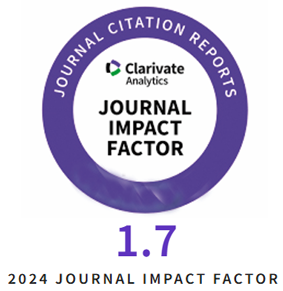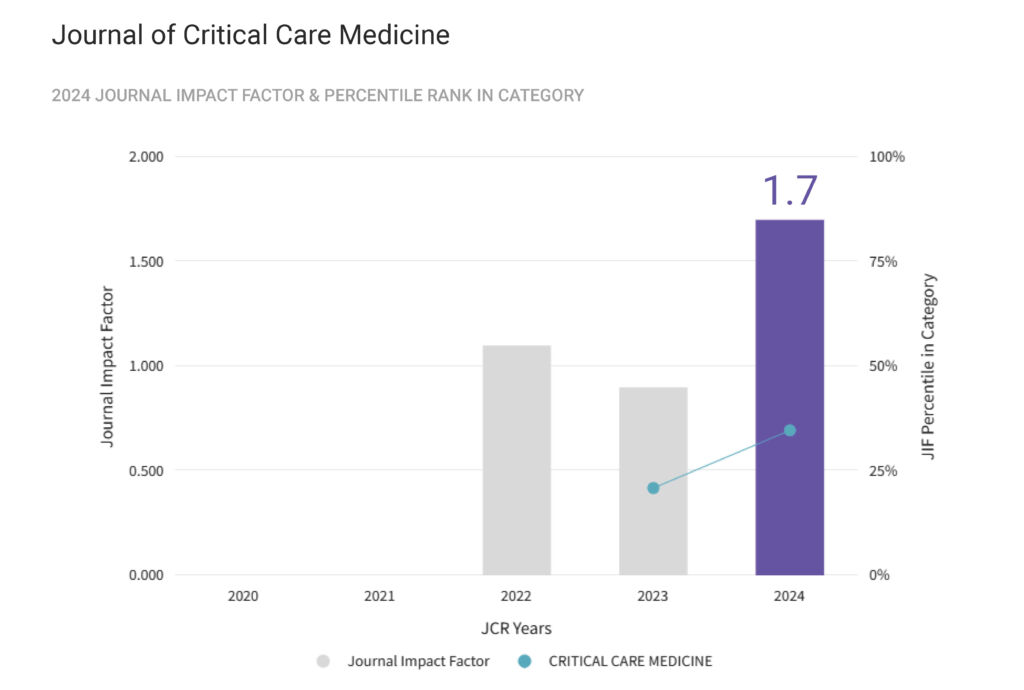Introduction: Pediatric bronchopneumonia is a prevalent life-threatening disease, particularly in developing countries. Affordable and accessible blood biomarkers are needed to predict disease severity which can be based on the Duration of Hospitalization (DOH).
Aim of the Study: To assess the significance and correlation between differential blood profiles, especially the Neutrophil-Lymphocyte Ratio (NLR), and the DOH in bronchopneumonia children.
Material and Methods: A record-based study was conducted at a secondary care hospital in Indonesia. After due ethical permission, following inclusion and exclusion criteria, 284 children with confirmed diagnoses of bronchopneumonia were included in the study. Blood cell counts and ratios were assessed with the DOH as the main criterion of severity. Mann-Whitney test and correlation coefficient were used to draw an analysis.
Results: Study samples were grouped into DOH of ≤ 4 days and > 4 days, focusing on NLR values, neutrophils, lymphocytes, and leukocytes. The NLR median was higher (3.98) in patients hospitalized over 4 days (P<0.0001). Lymphocyte medians were significantly higher in the opposite group (P<0.0001). Thrombocyte medians were similar in both groups (P=0.44481). The overall NLR and DOH were weakly positively correlated, with a moderate positive correlation in total neutrophils and DOH, and a moderate negative correlation in total lymphocytes and DOH. The correlation between the DOH ≤ 4 days group with each biomarker was stronger, except for leukocyte and thrombocyte. Analysis of the longer DOH group did not yield enough correlation across all blood counts.
Conclusions: Admission levels of leukocyte count, neutrophil, lymphocyte, and NLR significantly correlate with the DOH, with NLR predicting severity and positively correlated with the DOH.
Tag Archives: pneumonia
Clinical Profile and Course of Patients with Acute Respiratory Distress Syndrome due to Covid-19 in a Middle-Income Region in Mexico
Introduction: COVID-19 leads to severe clinical complications that culminate in respiratory failure and acute respiratory distress syndrome (ARDS). Despite reports of some comorbidities that contribute to the development of COVID-19-mediated ARDS, there is great variation in mortality rates among critical COVID-19 patients in the world. To date, no studies have described the incidence and comorbidities associated with ARDS due to COVID-19 in the northeastern region of Mexico.
Aim of the study: To describe patients diagnosed with ARDS due to COVID-19 in the northeastern region of Mexico, as well as its variations in comparison with other regions of the country.
Material and Methods: We conducted a prospective and observational study in a tertiary care center in Northeastern Mexico. All patients diagnosed with SARS-CoV-2 infection and requiring management in the intensive care unit were included. We developed a database that was updated daily with the patients´ demographic information, pre-existing diseases, disease severity, and clinical variables.
Results: The incidence of ARDS secondary to COVID-19 in HRAEV was high in comparison with other reports. Diabetes mellitus was the risk factor most associated with COVID-19-mediated ARDS.
Conclusion: Based on our findings and those previously reported in the literature, there are differences that we discuss between northeastern and central Mexico, and analyze other areas evaluated around the world.
Effectiveness of Minitracheostomy After Extubation in Patients with Pneumonia at High Risk of Reintubation: A Case Series
Introduction: Minitracheostomy involves the percutaneous insertion of a 4-mm-diameter cricothyroidotomy tube for tracheal suctioning to facilitate the clearance of airway secretions. The advantage of using the minitracheostomy is in the clearance of secretions, however data on their usefulness for respiratory failure after extubation is limited.
Aim of the study: We aimed to assess the use of minitracheostomy for patients with challenging extubation caused by significant sputum.
Material and Methods: We conducted a retrospective analysis of consecutive case series. We analyzed the data of 31 patients with pneumonia. After minitracheostomy, the primary endpoints of reintubation within 72 hours and clinical effects, including mortality, length of intensive care unit (ICU), or hospital stay, were assessed. The successful extubation group included patients who did not require reintubation within 72 hours. Conversely, the reintubation group consisted of patients mandating reestablishment of intubation within 72 hours.
Results: Among those who underwent minitracheostomy after extubation, 22 (71%) underwent successful extubation and 9 underwent reintubation (reintubation rate: 29%). The in-hospital mortality rates after 30 days were 18.2% in the successful extubation group and 22.2% in the reintubation group. The ICU and hospital lengths of stay were 11 days (interquartile range: 8–14.3 days) and 23 days (interquartile range: 15.5–41 days), respectively, in the successful extubation group; they were 14 days (interquartile range: 11–18.5 days) and 30 days (interquartile range: 16–45.5 days), respectively, in the reintubation group.
Conclusions: The prophylactic use of minitracheostomy may be an option as a means of reducing reintubation in patients with pneumonia who are at very high risk of reintubation.Keywords: Airway extubation, weaning, ventilator weaning, respiration, tracheostomy, sputum, pneumonia
Keywords: airway extubation, ventilator weaning, tracheostomy, sputum, pneumonia
Personalisation of Therapies in COVID-19 Associated Acute Respiratory Distress Syndrome, Using Electrical Impedance Tomography
Introduction: Each patient suffering from severe coronavirus COVID-19-associated acute respiratory distress syndrome (ARDS), requiring mechanical ventilation, shows different lung mechanics and disease evolution. Therefore, lung protective strategies should be personalised for the individual patient.
Case presentation: A 64-year-old male patient was intubated ten days after the symptoms of COVID-19 infection presented. He was placed in the prone position for sixteen hours, resulting in a marked improvement in oxygenation. However, after being returned to the supine position, his SpO2 rapidly dropped from 98% to 91%, and electrical impedance tomography showed less ventilation at the dorsal region and a ventral shift of ventilation distribution. An incremental and decremental PEEP trial under electrical impedance tomography monitoring was carried out, confirming that the dependent lung regions were recruited with increased pressures and homogenous ventilation distribution could be provided with 14 cmH2O of PEEP. The optimal settings were reassessed next day after returning from the second session of the prone position. After four prone position-sessions in five days, oxygenation was stabilised and eventually the patient was discharged.
Conclusions: Patients with COVID-19 associated ARDS require individualised ventilation support depending on the stage of their disease. Daily PEEP trial monitored by electrical impedance tomography can provide important information to tailor the respiratory therapies.
A Fatal Case of Community Acquired Cupriavidus Pauculus Pneumonia
Introduction: Cupriavidus pauculus is a rarely isolated non-fermentative, aerobic bacillus, which occasionally causes severe human infections, especially in immunocompromised patients. Strains have been isolated from various clinical and environmental sources.
Case presentation: A 67-year-old man was admitted to the Intensive Care Unit with acute respiratory failure. The patient was diagnosed with bilateral pneumonia, pulmonary sepsis and underwent invasive mechanical ventilation. Examination revealed diminished bilateral vesicular breath sounds, fever, intense yellow tracheal secretions, a respiratory rate of 24/minute, a heart rate of 123/minute, and blood pressure of 75/55 mmHg. Vasoactive treatment was initiated. Investigations revealed elevated lactate and C-reactive protein levels. A chest X-ray showed bilateral infiltration. Parenteral ciprofloxacin and ceftriaxone were administered. Tracheal aspirate culture and blood culture showed bacterial growth of Cupriavidus pauculus. Colistin was added to the treatment. There was a poor clinical response despite repeated blood culture showing negative results. The diagnosis of multiple organ dysfunction syndrome (MODS) caused by C. pauculus was made. The patient died eleven days after admission.
Conclusions: Clinical improvement cannot always be expected in spite of targeted antibiotic therapy. This pathogen should be considered responsible for infections that usually develop in immunocompromised patients.










